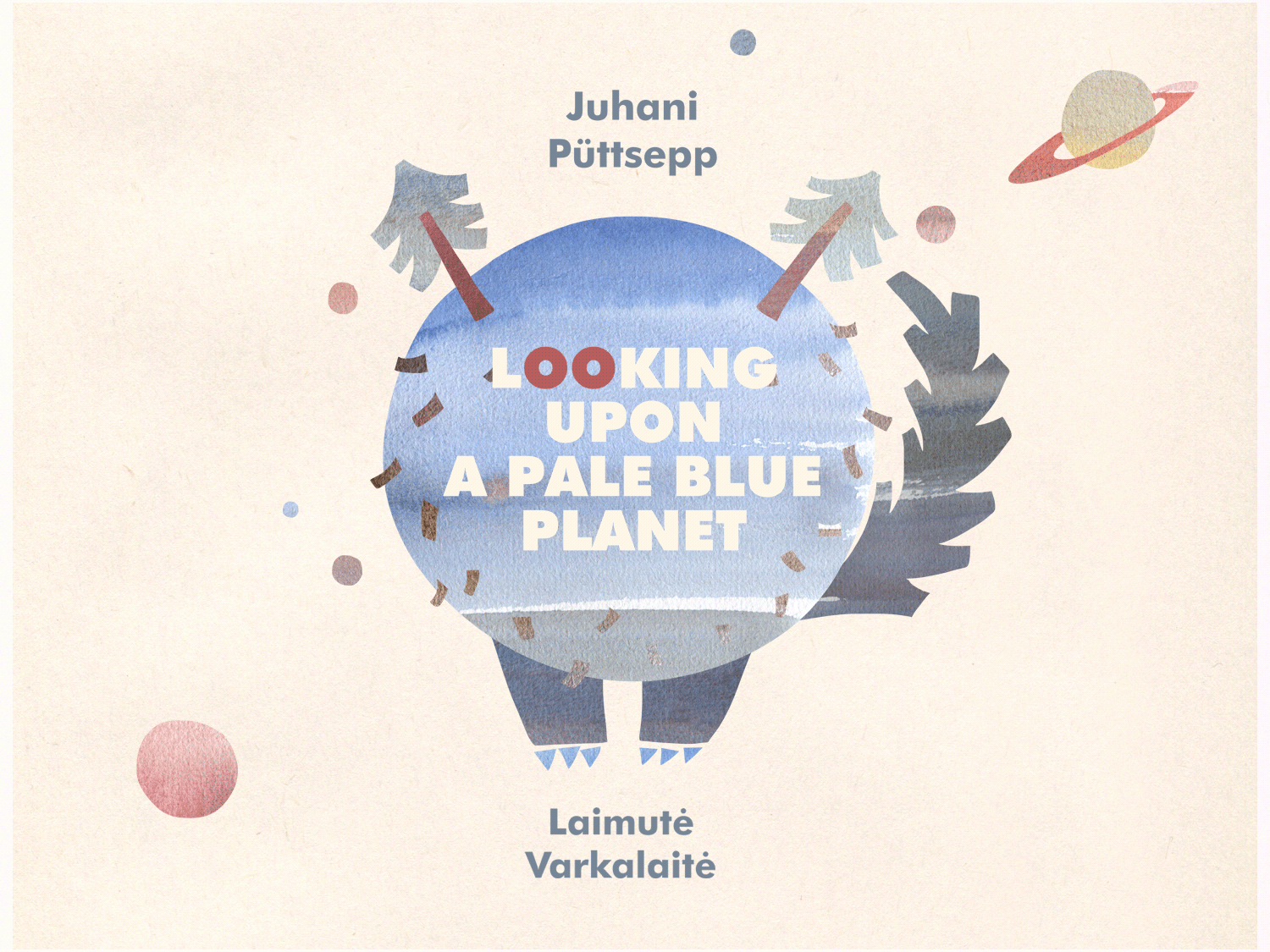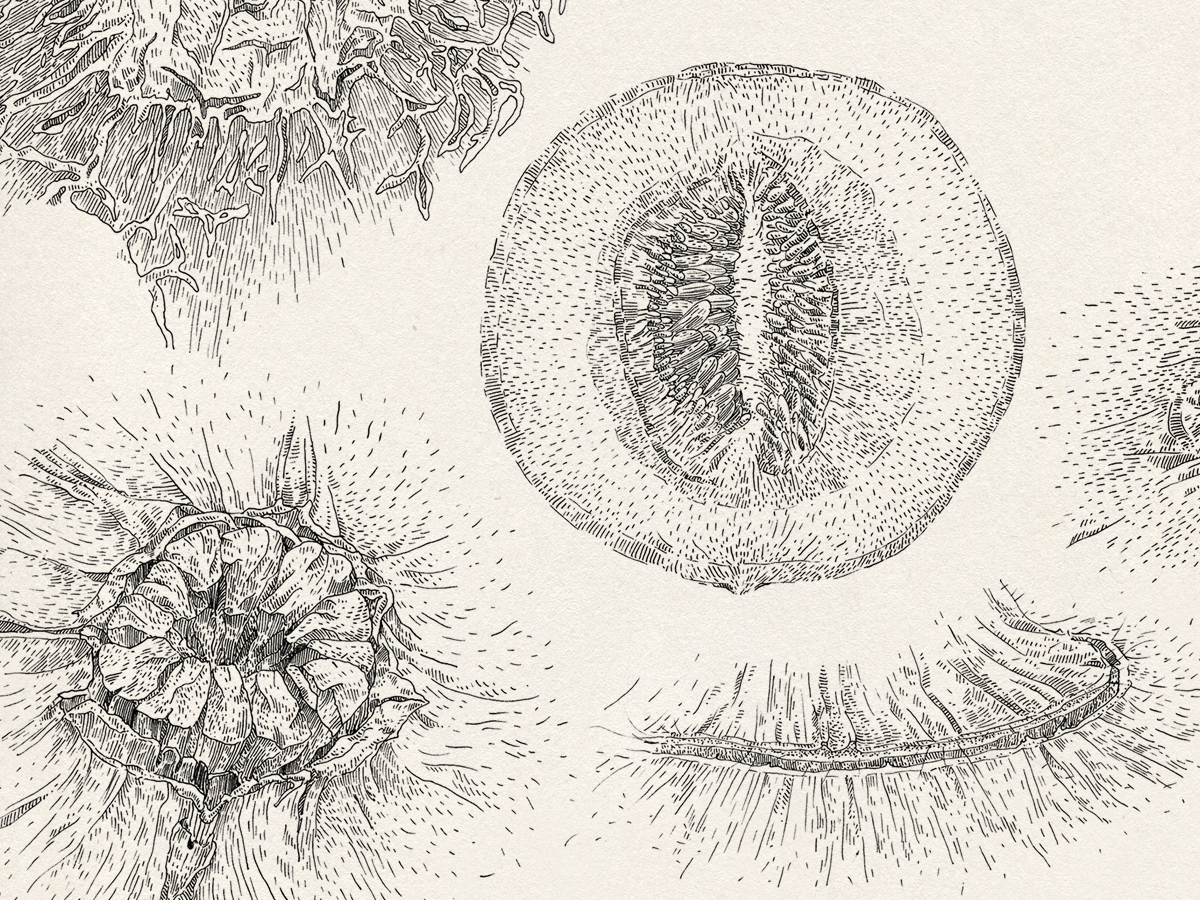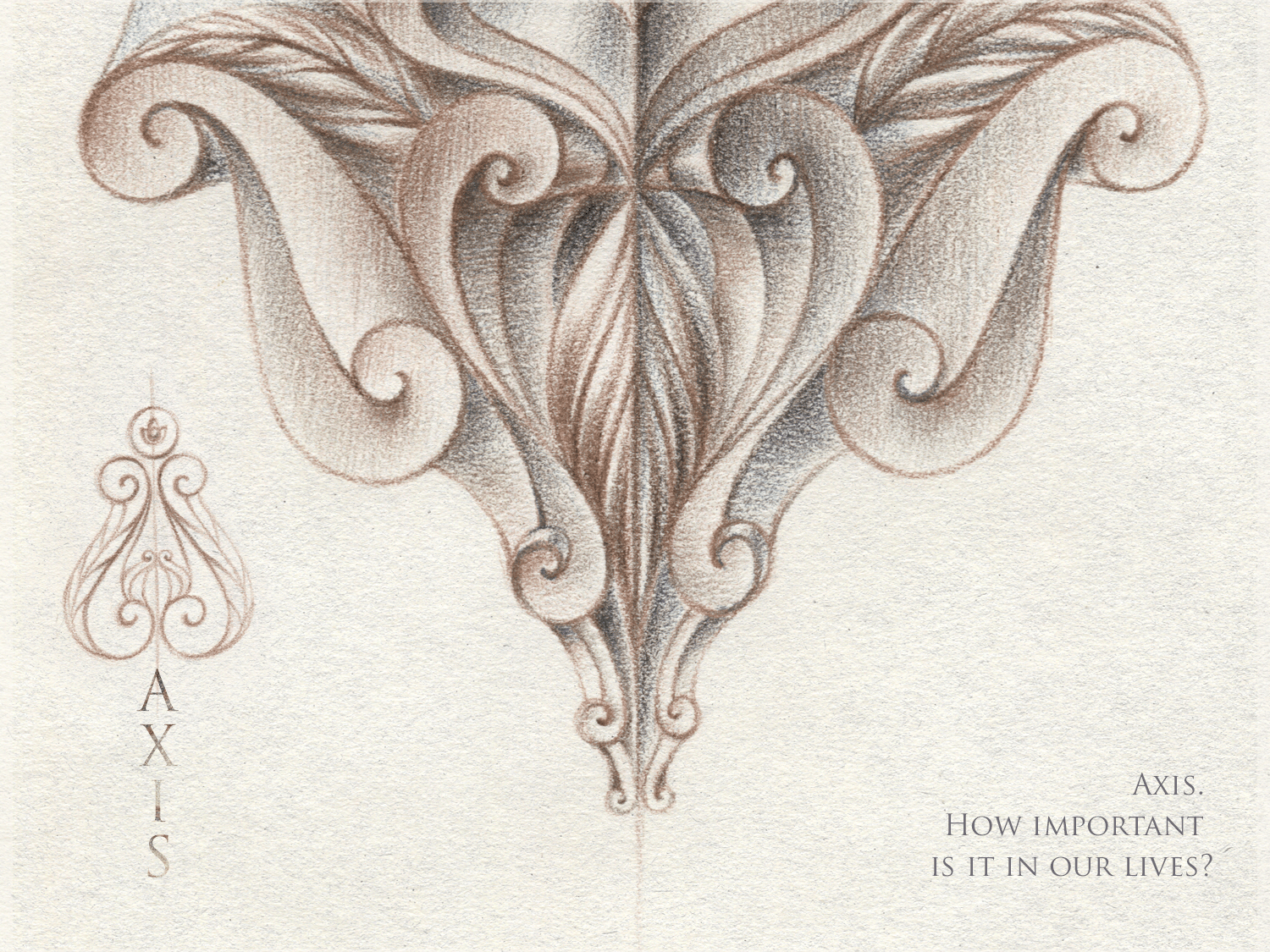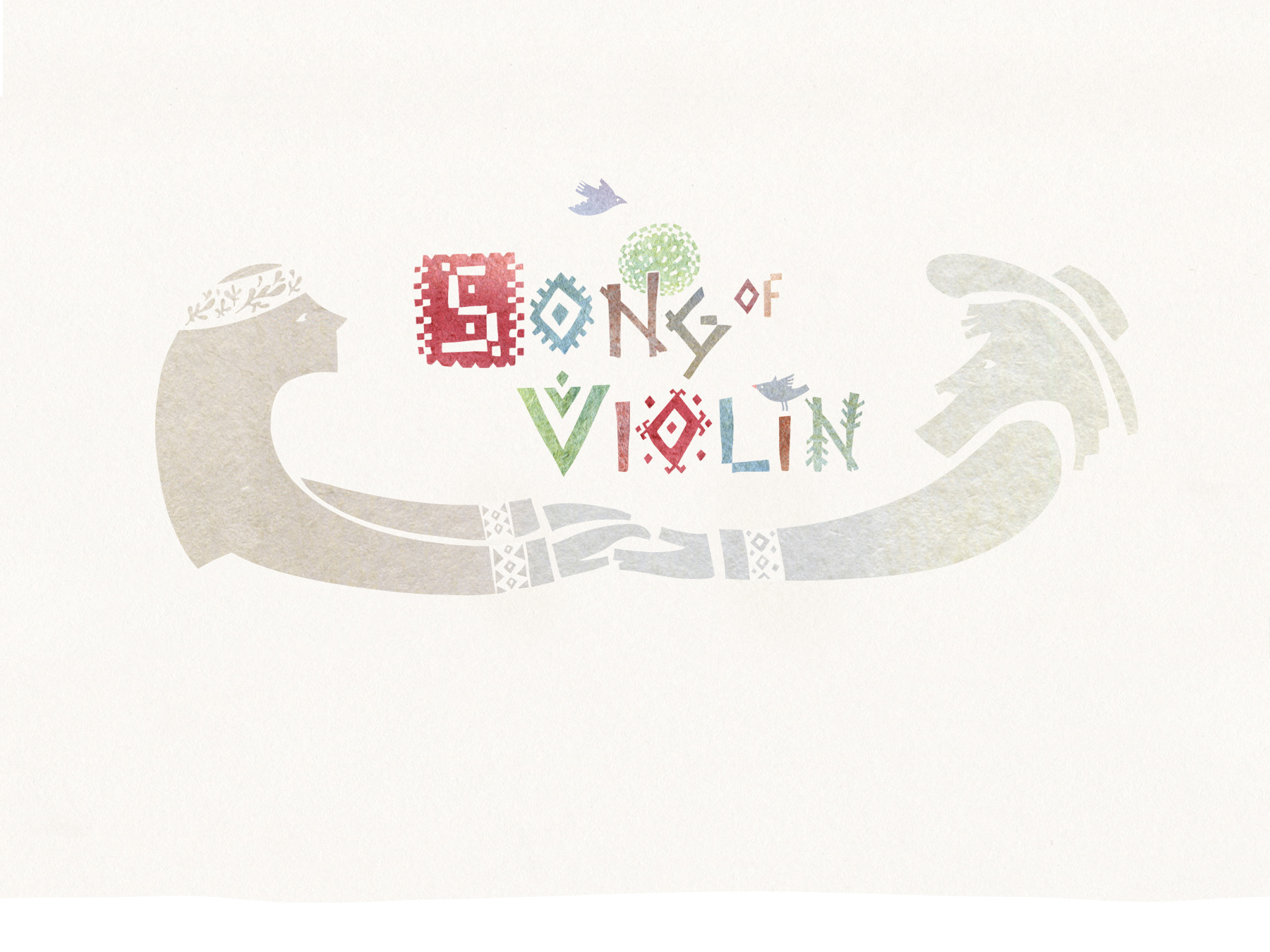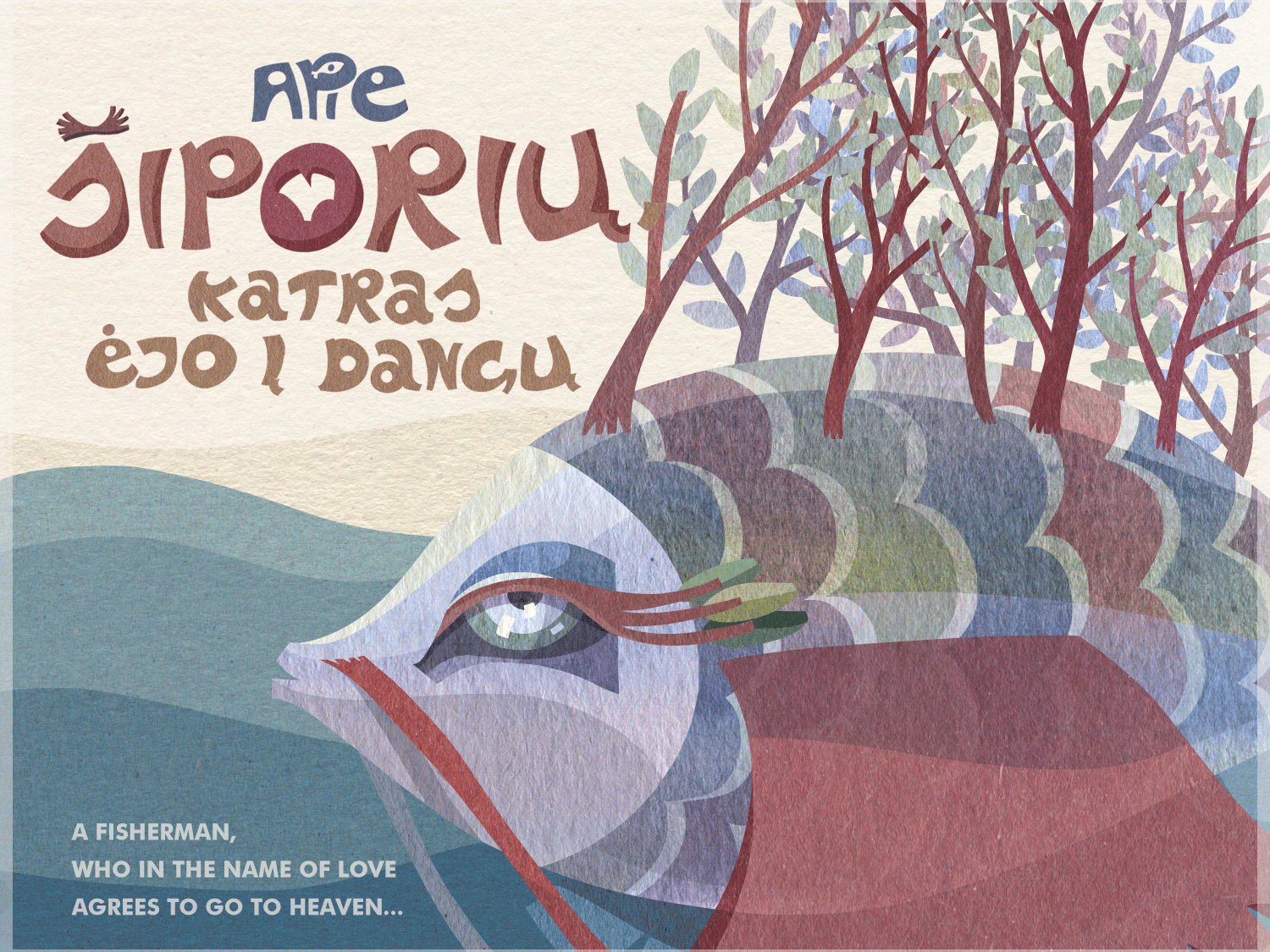The front page of the game. (A plane model was created by Lukas, one of the team members. My aim was to combine 3D model and other details of the scene graphically with colors and lines.)
Flight over the Atlantic Ocean /
Skrydis per Atlantą
When history becomes a part of nowadays...
A few months ago a group of students — Aurimas, Vadimas, Ignas, Lukas, Tomas, Viltė, Andrius — and their teacher — assoc. prof. dr. Tomas Blažauskas — of Kaunas University of Technology, started to develop an idea of a computer game. The game is dedicated for Lituanica — a small experimental airplane and its flight to Lithuania. Its pilots Steponas Darius ir Stasys Girėnas had the aim to achieve their native country flying from New York (America) to Kaunas (Lithuania). Though they were really professional pilots, unfortunately the end of this voyage hasn't a success and Lituanica crashed in a territory of Poland, in 1933. This historical journey is a meaningful fact of our history. It is a symbol of love for a native country, a sign of brave and faith.
Now this part of history can be seen in a Vytautas the Great War Museum, located in the city of Kaunas, Lithuania.
In a collaboration with this museum the project was started to develop for realization.
More than five months, a group of enthusiasts, a work day after day and an idea became real!
There are several aims of this project. Firstly — to make a history more attractive and do not let to be forgotten today. Secondly — to develop a culture of computer games in my country. Also — to motivate youth improve their knowledge and skills in order to create something exciting and interesting for people.
I am glad and thankful to be a part of this project.
It was an honor to me to be a graphic designer and illustrator of the game.
Text styles, icons, game environments, calligraphic details and a code of colors were tasks I was solving during the process.
I have gained not only my artistic skills and methods of working progress, but also as a member of a team sharing and improving ideas together.
This scene contains a few of plans. In the first one the hangar is seen — the place were Lituanica was prepared for the flight.
The inside of the hangar takes all the screen. For this reason, there was a task to illustrate walls...
... and a background in order to make a sense of interior.
A simulation of the hangar. There were done many steps before realization, in order to find the most propriate illustrations.
A scene of landscape is one of my favorites. There are three plans: electric poles, fields and the sky. All these plans, while the plane is trying to rise, moves in different speed and by this way the real sense of space is achieved. This effect really attracts eyes of the player.
Here is an image which shows how how the final scene was created by repeating a picture many times.
The first version of the scene. Its road part was taken and added to the second solution of the landscape. Such combinations learned me to find and use new ways how to achieve the final result.
A compass — is inherent object of the journey. There is a scene in the game where, if the player wants to go through this stage successfully, he needs to keep an arrow on the blue zone during all three steps.
In the very beginning, according to a history, pilots needed to earn some money in order to finish a construction and preparation work of Lituanica. So, they decided to make some flights in above Chicago and on this way to get a financial support. Their idea came true and was successful. This scene of the city was not realized, but was a good practice for me to realize how an illustration becomes a scene, how it fits or not. Also, the process was a great value. An illustration was created according to photos of that time, the beginning of the 20th century, and took a close look for this part of Chicago. And I loved that.
A window of all stages of the game. A player can see his scores and how many stages he has overcame already.
There was a good task for me to combine hand drawing and computer graphic.
Also, to find a suitable style of icons. And finally — a style of text.
To control these aspects and to find ways how to achieve unified graphic style was one of the greatest practices to me during the whole creativity process.
Main functions of the game were coded by well recognizable icons. In this way skills and knowledge of graphic design were improved and made a bit a contrast to hand drawing. This solution was done logically, in order to achieve better identification of visual parts of the game. That is important aspect for usability.
Later an idea of the game was extended and a wooden badge was designed. All the best players get this souvenir.
In the front side there is the main scene of the game. On the second side — a view of the Vytautas the Great War Museum.
Vytautas the Great War Museum.
A set of 16 cards, which represents essential details of game scenes and drawing process on a paper.
A few of details of the creative process. Graphite drawing — is the basic of each illustration. This technique was chosen in order to reveal a sense of old times, to convey a historical atmosphere.
Thanks for watching this project! | Ačiū!



